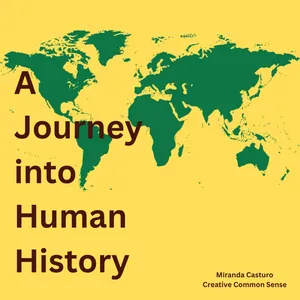Engines of Our Ingenuity 1082: Cuneiform and Turbines

Explore "cuneiform" with insightful episodes like "Engines of Our Ingenuity 1082: Cuneiform and Turbines", "Solénoïde - Mission 207 - 11.09.2023", "Ancient Mesopotamia: Part 2, Later Empires in Mesopotamia", "Ancient Mesopotamia: Part 1, The Rise and Eclipse of Sumer" and "S03E23 - Sodom and Gomorrah" from podcasts like ""Engines of Our Ingenuity", "Solénoïde - L'émission des Musiques Imaginogènes sur 30 radios FM-DAB", "A Journey into Human History", "A Journey into Human History" and "In Research Of"" and more!





We're joined by Dr. Nathan French to discuss the Biblical tale of Sodom and Gomorrah and the ISO team's efforts to examine archaeological evidence supporting its actual historical existence.
Nimoy Fashion:

Dr. Avrahamm Biran (1909 - 2008)

The concept of Biblical Maximalism
The big dig at Ebla where the library of clay tablets was found.

In 1976 Giovanni Pettinato claimed tablets found at the dig contained the names of five cities of the plain including Sodom and Gomorrah. Modern scholarly consensus is that this was incorrect.
I think this is archaeologist Paulo Matti (Pettinato's fellow researcher on the dig) alongside an unnamed female researcher.

As promised, the animated gif of the sinners in our "re-creations" of ancient Sodom.


Discussion of Baal in the episode doesn't hint that this Biblical "villain god" may actually represent an entire class of deities.
About 17 mins into the episode there's a guy who runs a hot spring and his moustache reminded Jeb of a certain someone...

Doctor Bruce Bolt sitting in front of some truly fabulous old equipment.

Finally - one more thing - the link to the Atari E.T. fiasco documentary.

I have mentioned before that the Pythagorean Theorem was not Pythagoras's discovery. This podcast looks at the tangible proof of the theorem, and where it might have come from! To read the podcast's transcripts, visit me at www.MathScienceHistory.com.
To buy my book Hypatia: The Sum of Her Life on Amazon, visit https://a.co/d/g3OuP9h
For Math! Science! History! merch, visit https://www.mathsciencehistory.store/
Until next time, carpe diem! Gabrielle
All music by Lloyd Rodgers - No Copyright - No rights reserved


For our inaugural podcast episode, we chose to focus on one of the most important technological innovations of the ancient world - the invention of writing! This episode introduces you to cuneiform, the writing system developed during the late 4th millennium BCE, with an interview with Dr. Jennifer Ross of Hood College, and a narration of Enmerkar and the Lord of Aratta, the Sumerian literary composition that explains how and why writing was invented.
Interview conducted on 2/23/2019.
Please let us know what you think! Is there something you want more, or less, of?

SPONSORED BY:
Audible. To take advantage of the Amazon Prime offer go to https://www.audible.com/ndq or text ndq to 500 500. This offer ends July 31st, 2018.
STUFF FROM THIS EPISODE
Vulcan Sculpture in Birmingham, Alabama
Vulcan’s Traffic “Light for Life”
Replica of the Parthenon in Memphis, TN
Hagia Sophia in Constantinople
The Hanging Gardens of Babylon
Tennessee Aquarium in Chattanooga
Loblolly Pine Decline and Leptographium Overview - Auburn University
Dr. Stephanie Dalley, “Lost Gardens of Babylon”
Biblical Story of Men Being Thrown in the Fire
CONNECT WITH NO DUMB QUESTIONS:
Support No Dumb Questions on Patreon if that sounds good to you
Our website is nodumbquestions.fm
SUBSCRIBE LINKS:
OUR YOUTUBE CHANNELS ARE ALSO FUN:
Matt's YouTube Channel (The Ten Minute Bible Hour)
Destin's YouTube Channel (Smarter Every Day)




In this episode we look at the practice of Babylonian astronomy and the tools that made it possible: cuneiform writing and arithmetical mathematics.

You say you want a revolution? Would you settle for the greatest invention of all time?

Stay up to date
For any inquiries, please email us at hello@podcastworld.io